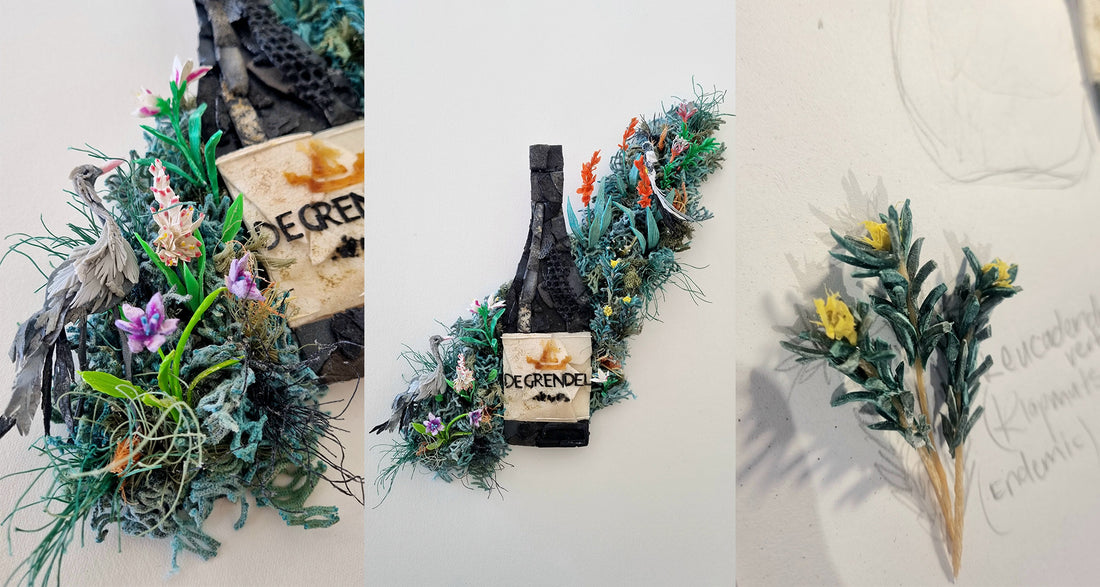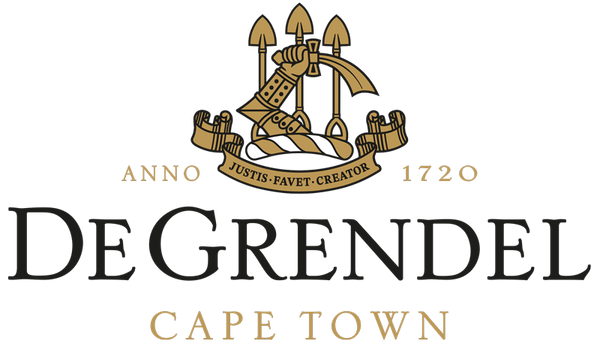
De Grendel Amongst the Renosterveld by Janet Ormond
Share
“De Grendel amongst the Renosterveld” – Earth Day 2023
Made from ocean plastic pollution
This artwork is a powerful statement about the beauty and fragility of our planet, and the urgent need to take action to protect it.
Created by environmental artist Janet Ormond, the sculpture is made entirely from ocean plastic collected off the shores of South Africa.
The centrepiece is a bottle of De Grendel wine, amidst the rich fauna and flora that surrounds us.
The sculpted artwork features important species of plants found in the Renosterveld, a unique and valuable ecosystem that is home to many endemic species. Amongst the flora is a Cape Sugarbird and our national bird, The Blue Crane, which symbolizes bravery and the ability to restore order. As we face the devastating impact of climate change, we too all need to be brave and work together to protect our planet.

While the sculpture is visually stunning, it also serves as a reminder of the negative impact that humans have had on our environment. The use of ocean plastic highlights the urgent need to address ocean pollution and reduce our impact on the environment.
As we celebrate Earth Day, let us reflect on the beauty that surrounds us and the importance of making changes in our daily lives to lessen our impact on the planet. We can all play a role in protecting our environment and ensuring a sustainable future for generations to come.
Interesting Insights Into The Piece
The bottle of Shiraz represents De Grendel farm at the foot of the Renosterveld which is shaped as an outline of Tygerberg hill.
Included in the Renosterveld taxa are 6 important/endemic species;
- Watsonia – native to Southern Africa
- Geissorhiza imbricate - commonly known as Ker Gawl and listed as near threatened.
- Babiana melanops – also known as the Blackeye Bobbejaantjie and listed as vulnerable.
- Leucadendrin verticvillatum – commonly known as Klapmuts conebush and listed as critically endangered.
- Lachenalia liliflora – commonly known as Cape hyacinth or Viooltjie in Afrikaans and is listed as critically endangered.
- Serruria incrassata – commonly known as Silver-paw Spiderhead or much better sounding in Afrikaans, Silverklouspinnekop and is listed endangered.

Special thanks to Jonathan Bell from the Cape Invasive Species Unit - Environmental Management Department
Spatial Planning and Environment Directorate for assisting with with information on the Tygerberg hill area and the Swartland Shale Renosterveld taxa.
The ocean plastics used includes;
- Fishing net
- Flip Flop
- Rope
- Bottle lid liners
- Container lids
- Fishing line
- Tubs
- Duct tape
- Milk carton seal
- Synthetic Canvas
- Toothpaste tube
- Package strapping
- Straw
- Plastic bottle
- Cooldrink lids
- Other unidentifiable plastics
